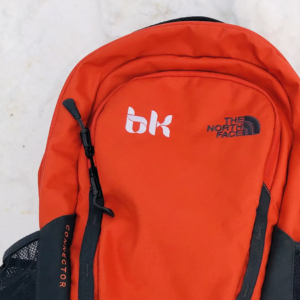How To Boost SEO With Image Alt Text: Best Practices
Thoughtful, well-produced content is one of the best ways to engage your audience. And it’s absolutely critical to maintaining loyalty with existing customers, building trust with people new to your brand, and driving traffic to your site through organic search.

There are so many factors that go into quality organic content, including:
- Developing audience personas to put a face to your readers
- Sound keyword targeting
- Effective headlines to increase click-thru rates
- Well-written meta titles and descriptions that can boost SEO
With all the above, you can improve your search engine rankings with an effective content marketing strategy.
But if you really want to get into the nitty gritty of SEO, you can up your game even more with your image alt text.
What Is Image Alt Text?
When you search Google, the results that show up are the effect of Google sending out little bots to scour the text and meta info of web pages across the internet to find the results that match up most closely with your search query.
In this quest, Google searches for more than just the copy on the pages. It also searches videos and images, and returns those to you as well. But when you search for “Yosemite Sam,” how does Google know which pictures contain that wily lil’ cartoon character, and which photos are of, say, Yosemite National Park?
Google may be able to tell that a photo is of a cartoon cowboy kinda lookin’ dude, but the way it knows which photos are of the one and only Yosemite Sam is because someone included “Yosemite Sam” in the image alt text. Boom. No pun intended… even though Yosemite Sam loves blowing stuff up.
The image alt text serves three primary purposes:
- Replacing Images: When a browser can’t load an image for whatever reason, it shows the image alt text instead. This way you know what the heck you’re supposed to be looking at.
- Helping Visually Impaired Users: Image alt text is super important for accessibility for visitors to your website who are visually impaired. Computers can read the alt text out loud to tell users the contents of a page, including images.
- Boosting SEO: Image alt text tells Google (and Bing…if you use that) the content of the images on your page.
How Exactly Does Image Alt Text Boost SEO?
Image alt text improves SEO in two ways:
- It helps to make sure your images show up higher in relevant search results. This is especially important if you’re running an ecommerce site. If you sell, say, coffee mugs with Yosemite Sam on them, then you want your product images to show up with people search “yosemite sam coffee mug,” right?
- Image alt text allows you to target keywords to help the page the image is on rank higher. Since we’re in the business of digital marketing, we might set the image alt text on that smiling business man to “Digital marketing expert smiling at the results of his content marketing strategy.” We fit some basic keywords in there — “digital marketing” and “content marketing strategy.”
How to Write Image Alt Text: Best Practices
If you want to maximize the SEO-boosting effects of image alt text, then there are some important image alt text best practices to follow.
Good image alt text is descriptive of exactly what the image contains
- If a photo on your site is of Yosemite Sam eating a cheeseburger, then the image alt text should say “yosemite sam eating a cheeseburger.”
- That way, when that one fanatic out there searches for “yosemite sam eating a cheeseburger,” he’ll find your website. You two were made for each other. Clearly.
- You don’t need to say, “image of yosemite sam eating a cheeseburger.” The “image of” part is a given. You’re welcome.
- Pro tip for increased accessibility: When you use images to portray clickable buttons, the image alt text should be of what the button says, like “Sign Up Now!”
Good image alt text is under 125 characters long
- You don’t need to include the precise condiments on the burger. You could, but don’t — screen readers cut off alt text after 125 characters, so it’s most helpful for visually impaired visitors if you keep it within that limit.
- There is another tag called longdesc, which allows you to provide a longer description. Longdesc doesn’t affect SEO, but it’s a good way to improve accessibility for visually impaired users, adding more complete details about the image and its contents beyond what you can fit in the image alt text.
Good image alt text is loaded with keywords
If you’re selling coffee mugs that feature Yosemite Sam eating a cheeseburger, then you want to improve your chances of connecting your site with people looking for such a peculiar product.
Of course, you probably can’t expect most people to search for “yosemite sam eating a cheeseburger coffee mug.” This is why it’s smart to spoon feed the masses by going after more general keywords, like “yosemite sam coffee mug” or “looney tunes coffee mug.”
If you have enough room to work with, you can have the best of both worlds, with something like “Coffee mug of Yosemite Sam eating a cheeseburger.” And if your entire business is selling coffee mugs emblazoned with Looney Tunes characters, then you might use a similar approach to every product image: “Looney Tunes coffee mug of [insert character name here].”
Your site will be full of images with the keyword “looney tunes coffee mug,” telling Google that you are the master of this type of product.
At the same time, avoid keyword stuffing. Prioritize descriptive image alt text and fit in your target keywords if they make sense.
These are very basic suggestions — we suggest you read our guide on how to win at keyword research »
Wait…What About the Image Title? What’s That All About?
The image title is bit different than image alt text. It’s what appears when you hover your cursor over an image itself.
Search engines don’t look at image title when providing results to search queries. So yes, you should provide a descriptive image title for accessibility and organization within your content management system, but it won’t affect your SEO.
How to Add Image Alt Text Images
Your CMS (e.g., WordPress, Wix, Squarespace, etc.) should make it easy to add and edit image alt text. You should be able to click on an image and open an options or settings tool, where you’ll find a field to enter image alt text.
If your CMS doesn’t include a handy interface for that, you can also write image alt text write into your page’s html code, like this:
<img src=“yosemitesam_burger.jpg” alt=“Yosemite Sam eating a cheeseburger”>
Cool, Thanks For All The Help! Your Blog Is Really Neat And Always So Helpful.
Aww, schucks. You’re making us feel all the feels. If you want, we can help you even more. We’ve written a bunch of awesome blogs about how to boost SEO, like this one about how to write good blog headlines.
Other Articles
Navigating the Off-Season: Marketing Strategies for Outdoor, Overlanding, and Camping Brands
The world of outdoor adventure, overlanding, and camping is fueled by the passion for exploration, nature, and the thrill of...
Mastering Black Friday Cyber Monday Campaigns: Strategies for Outdoor Retail Brands
Black Friday Cyber Monday (BFCM) has become a pivotal period for businesses across various industries, and the outdoor retail sector...
Why Outdoor Retailers Must Plan Black Friday Cyber Monday Campaigns Well in Advance
For online retailers in the outdoor industry, the Black Friday Cyber Monday (BFCM) weekend represents a significant sales opportunity. However,...



